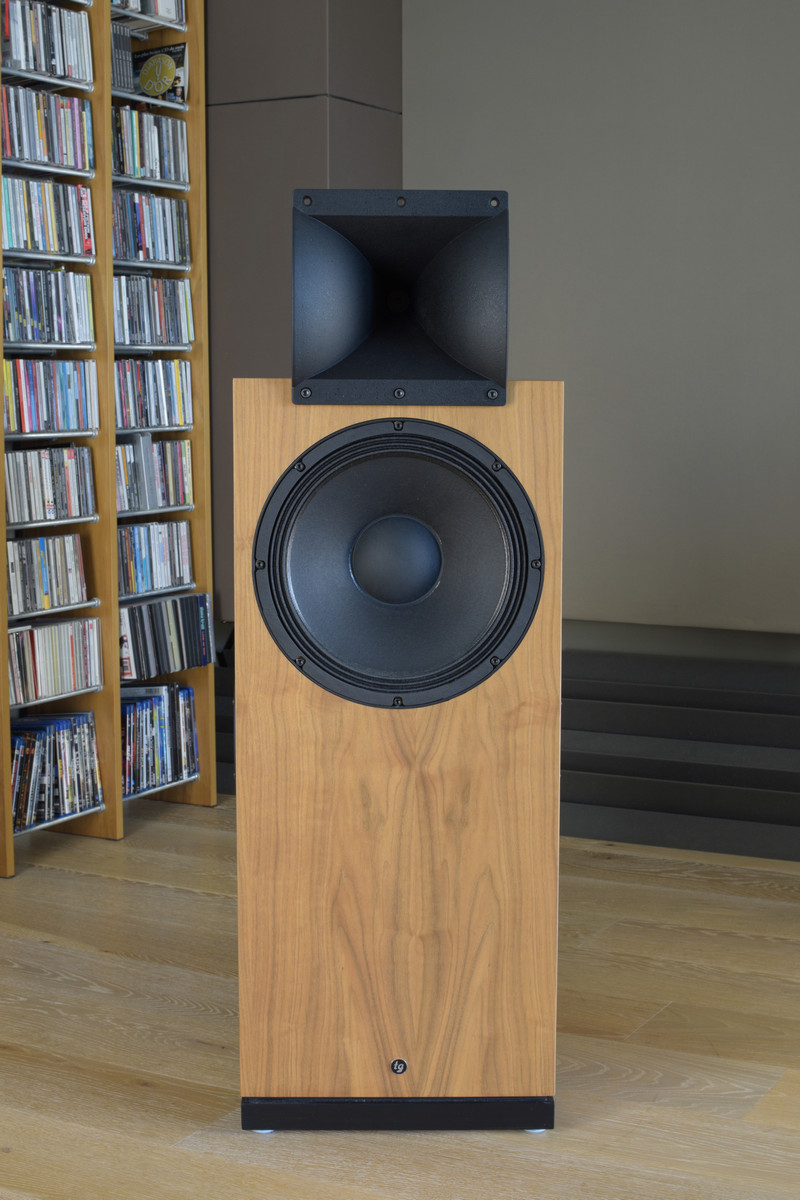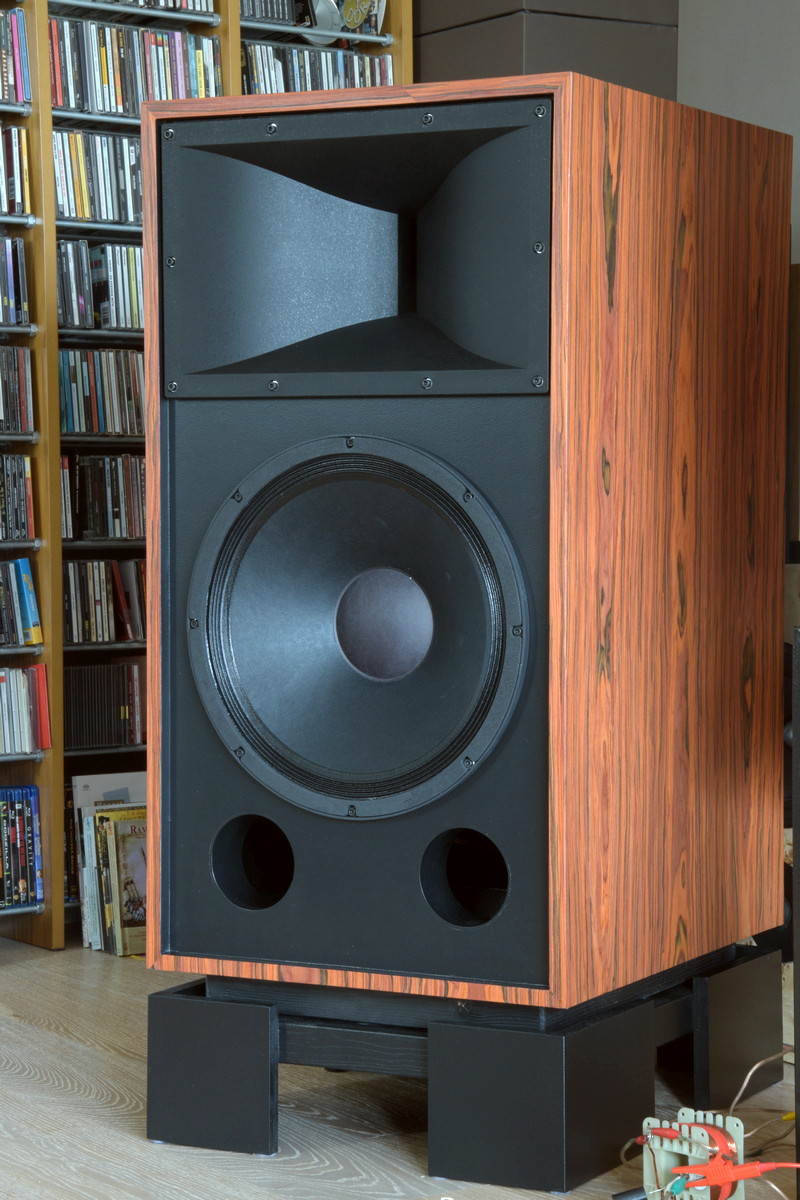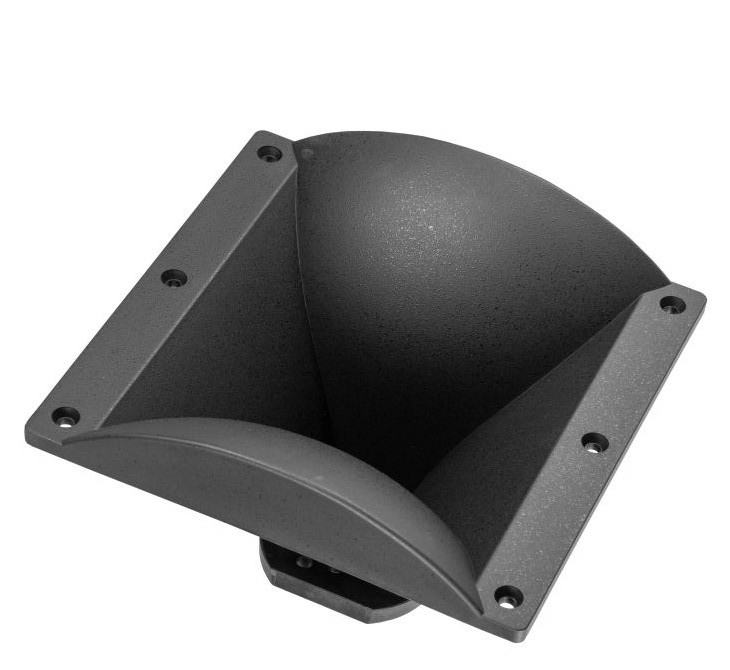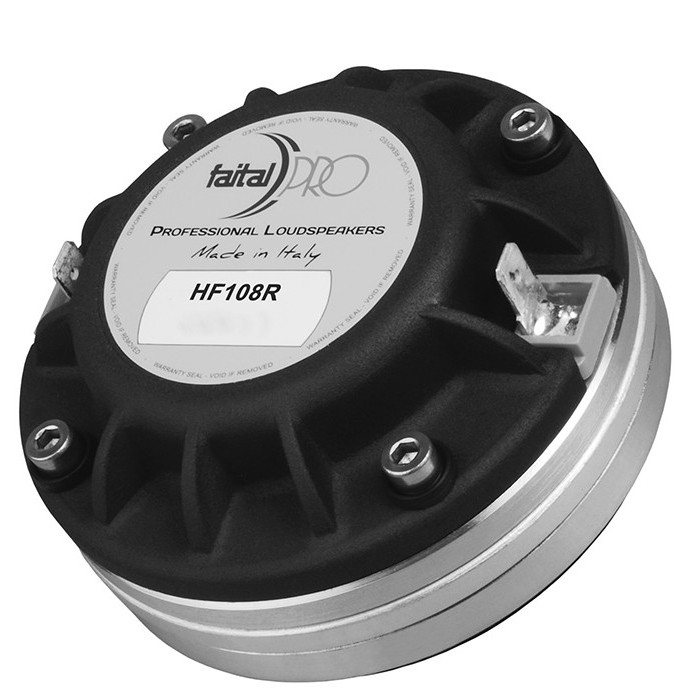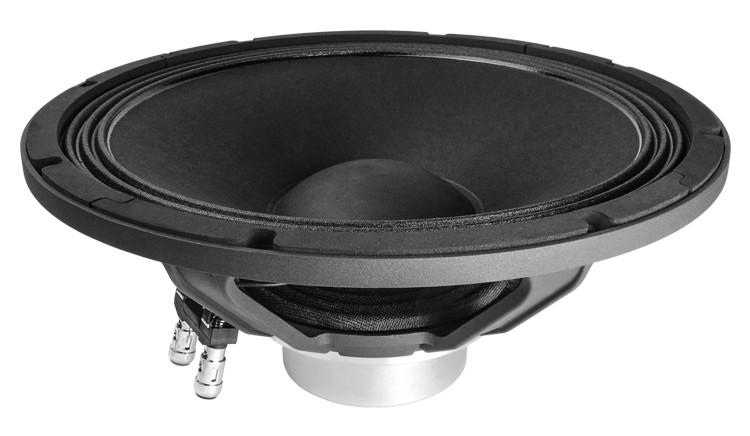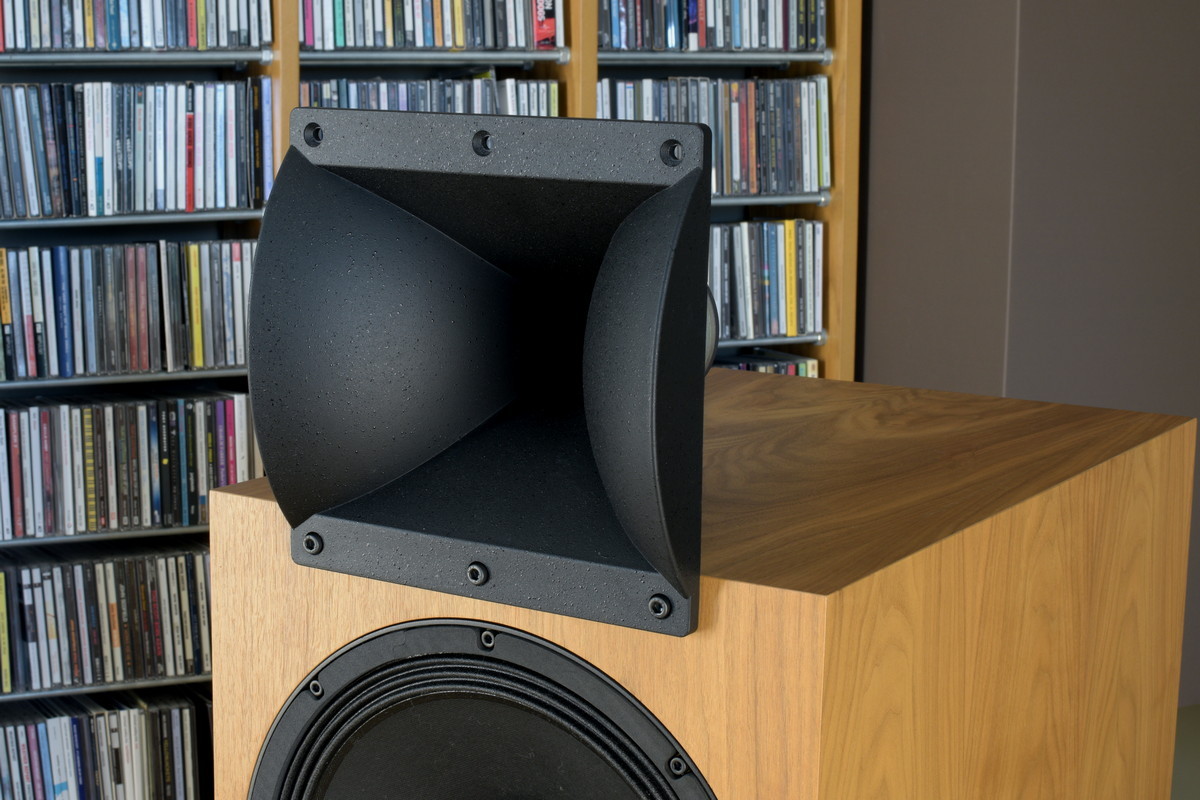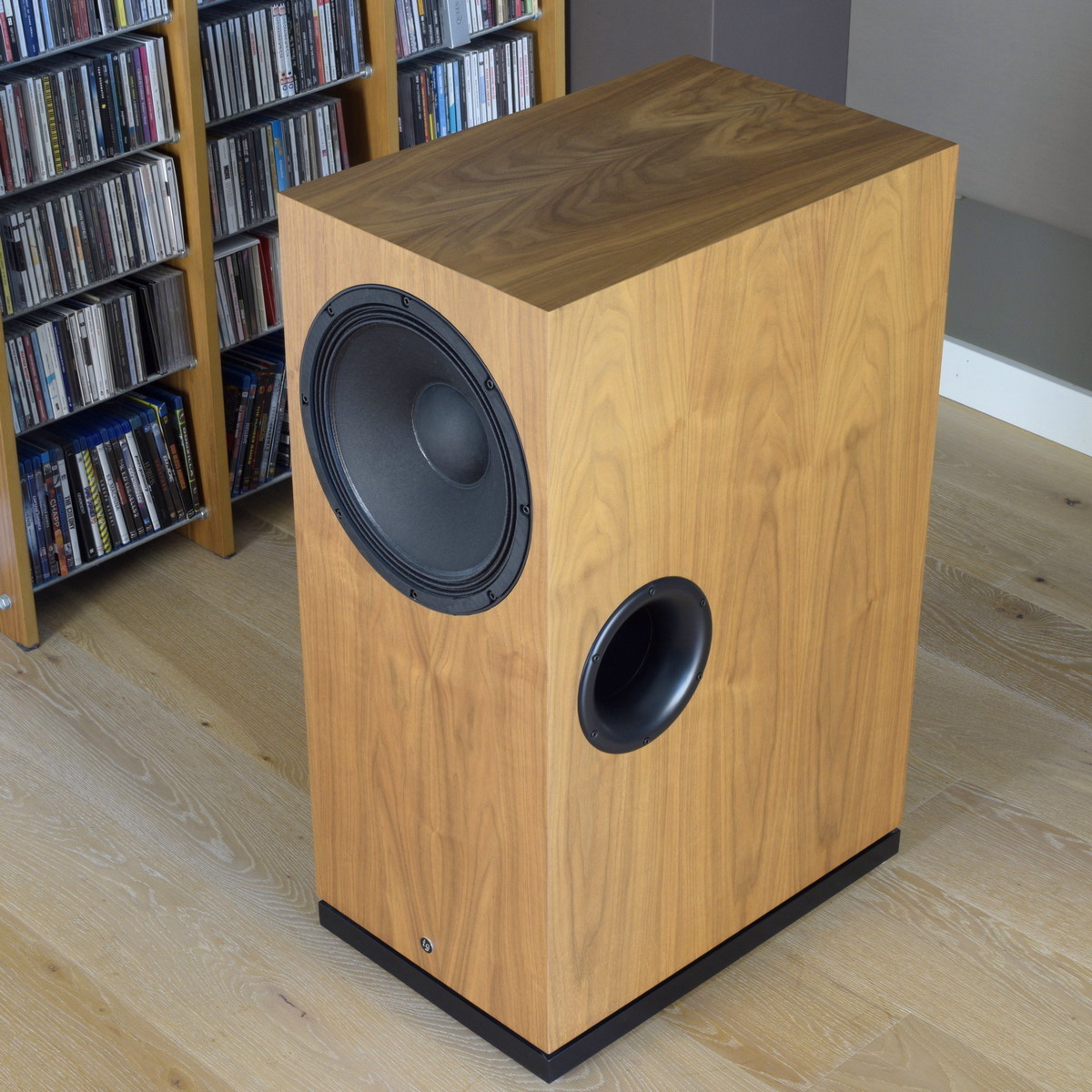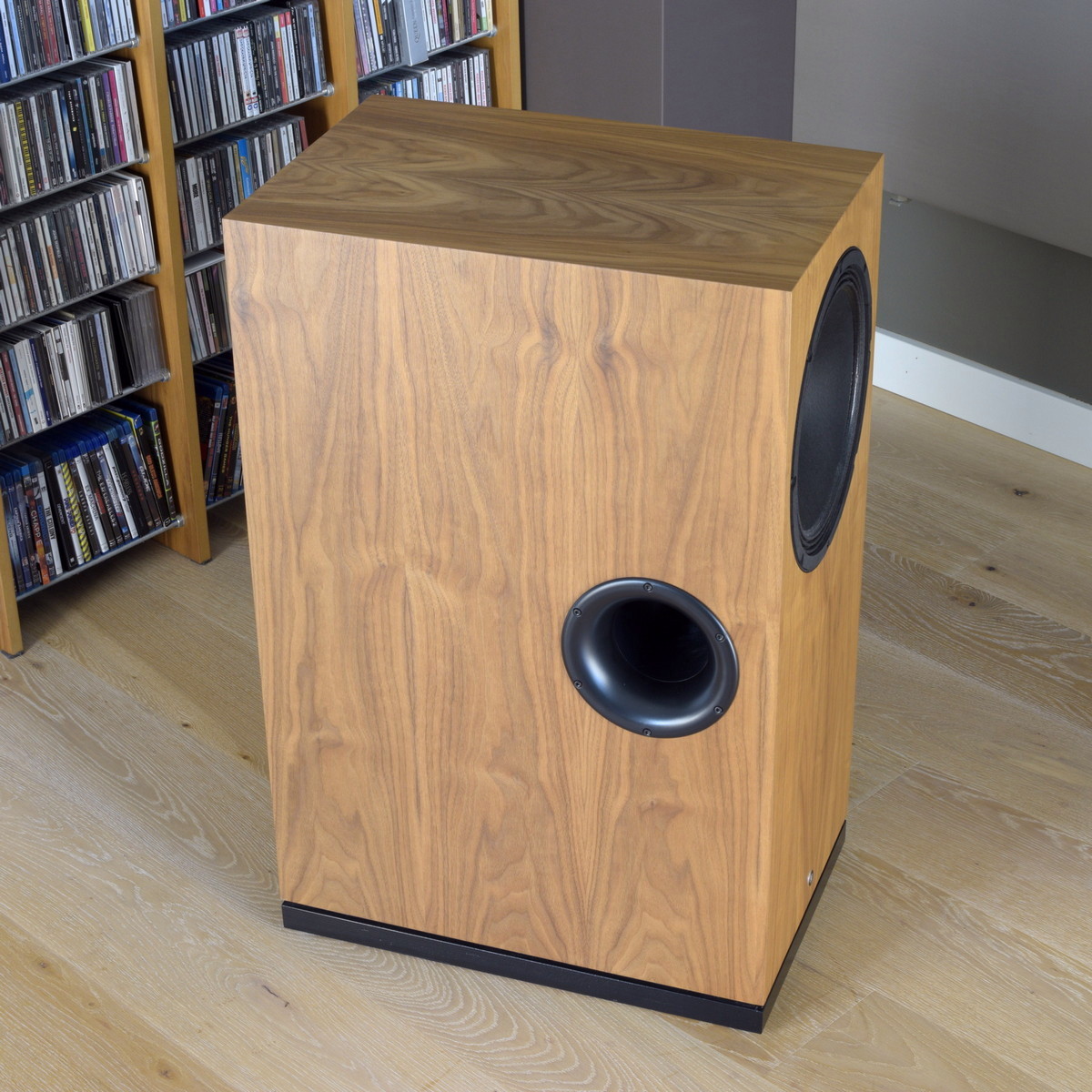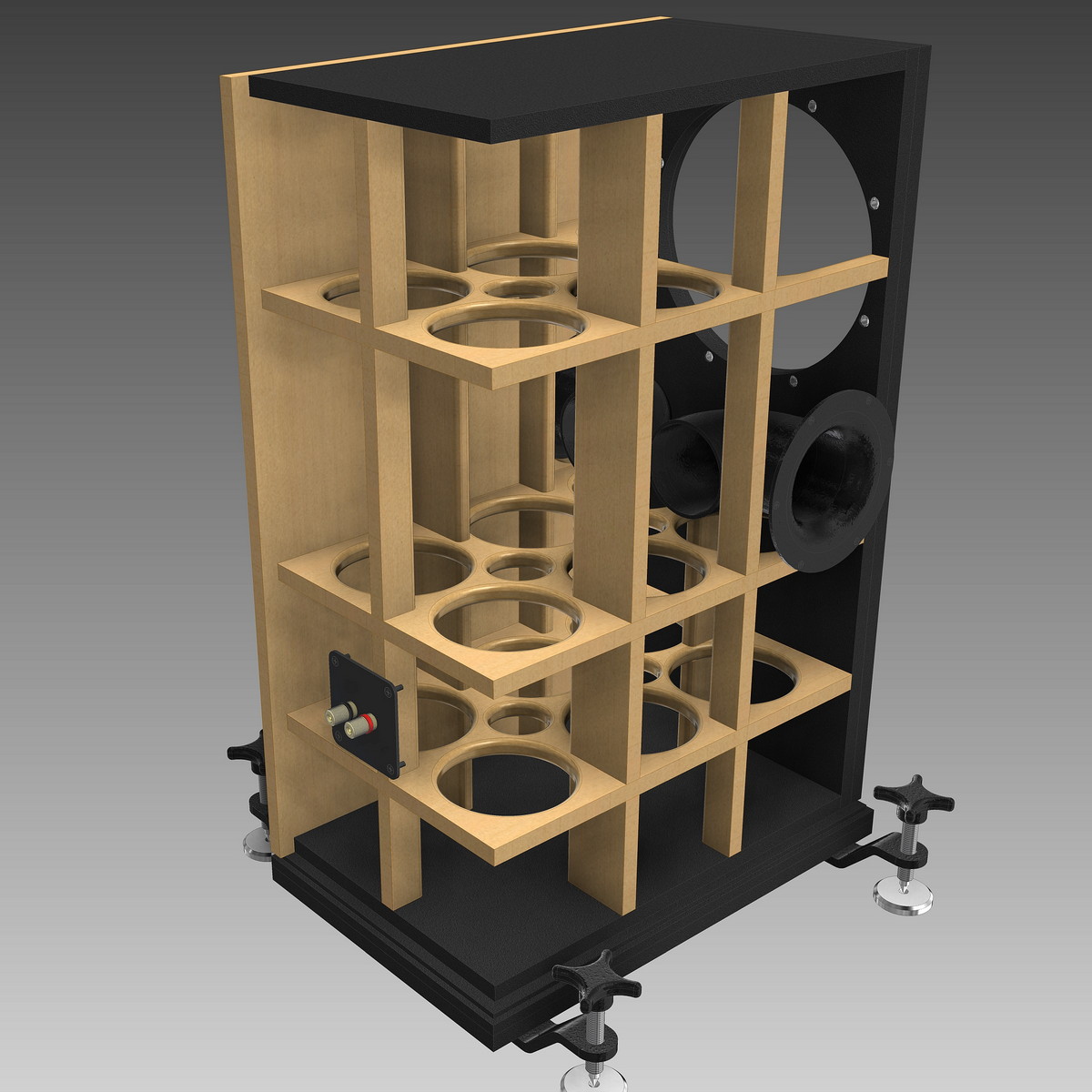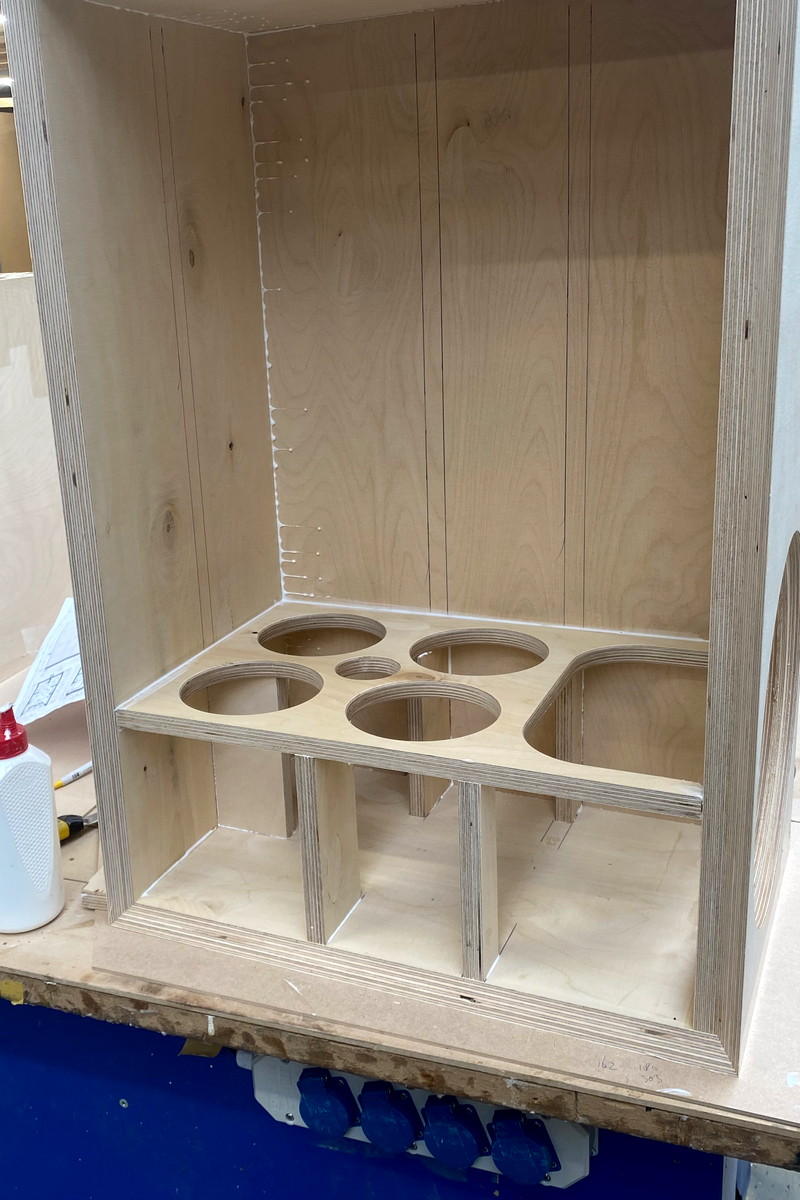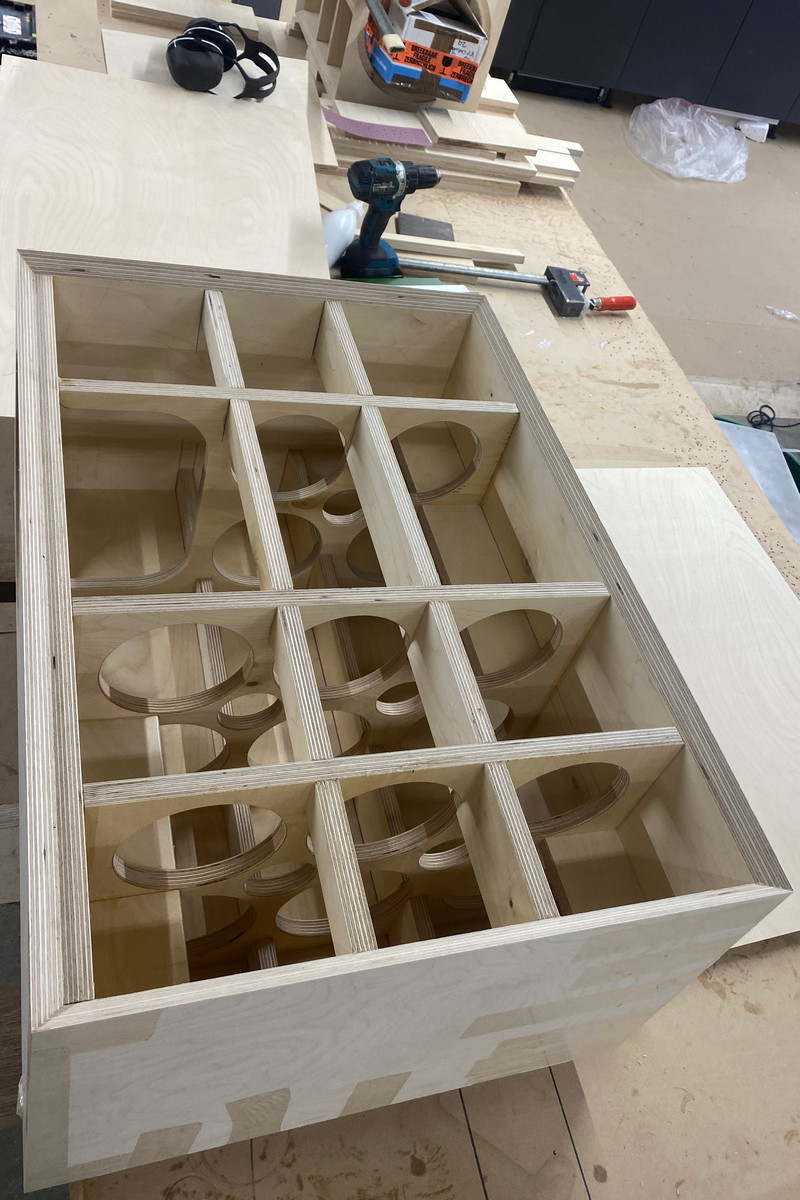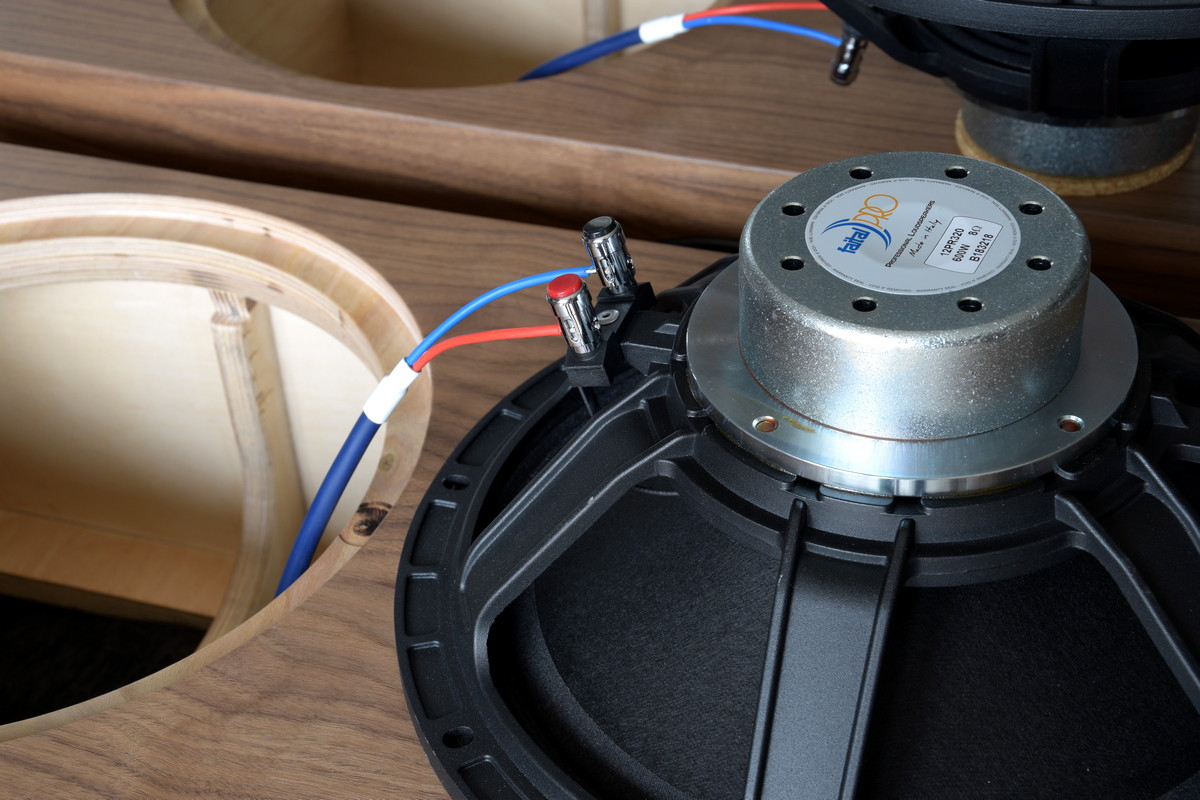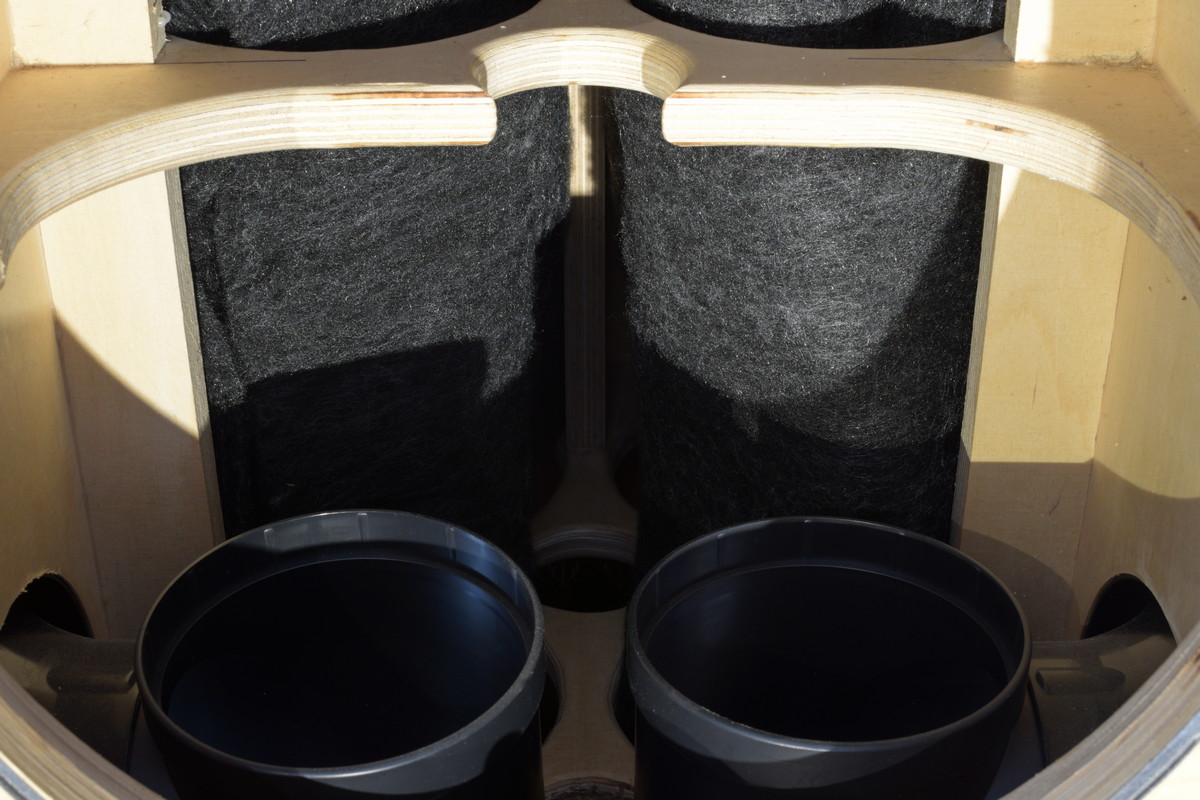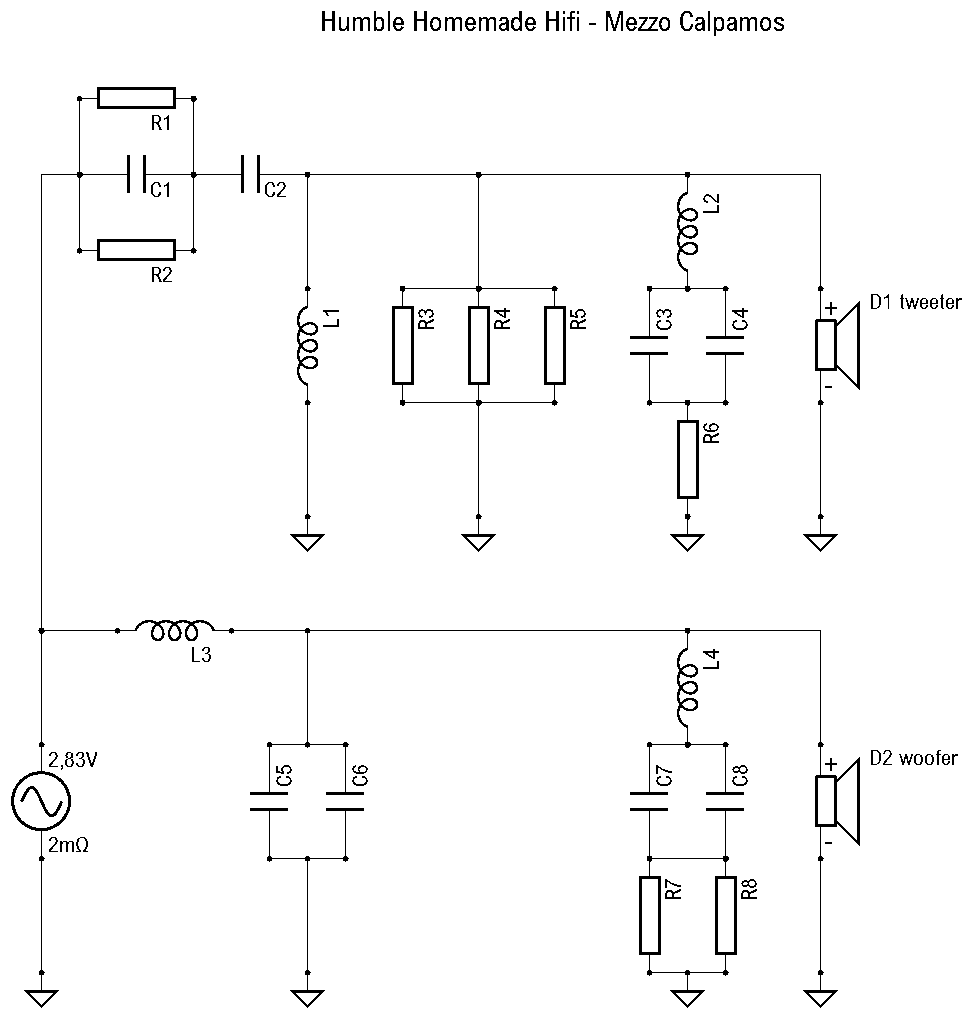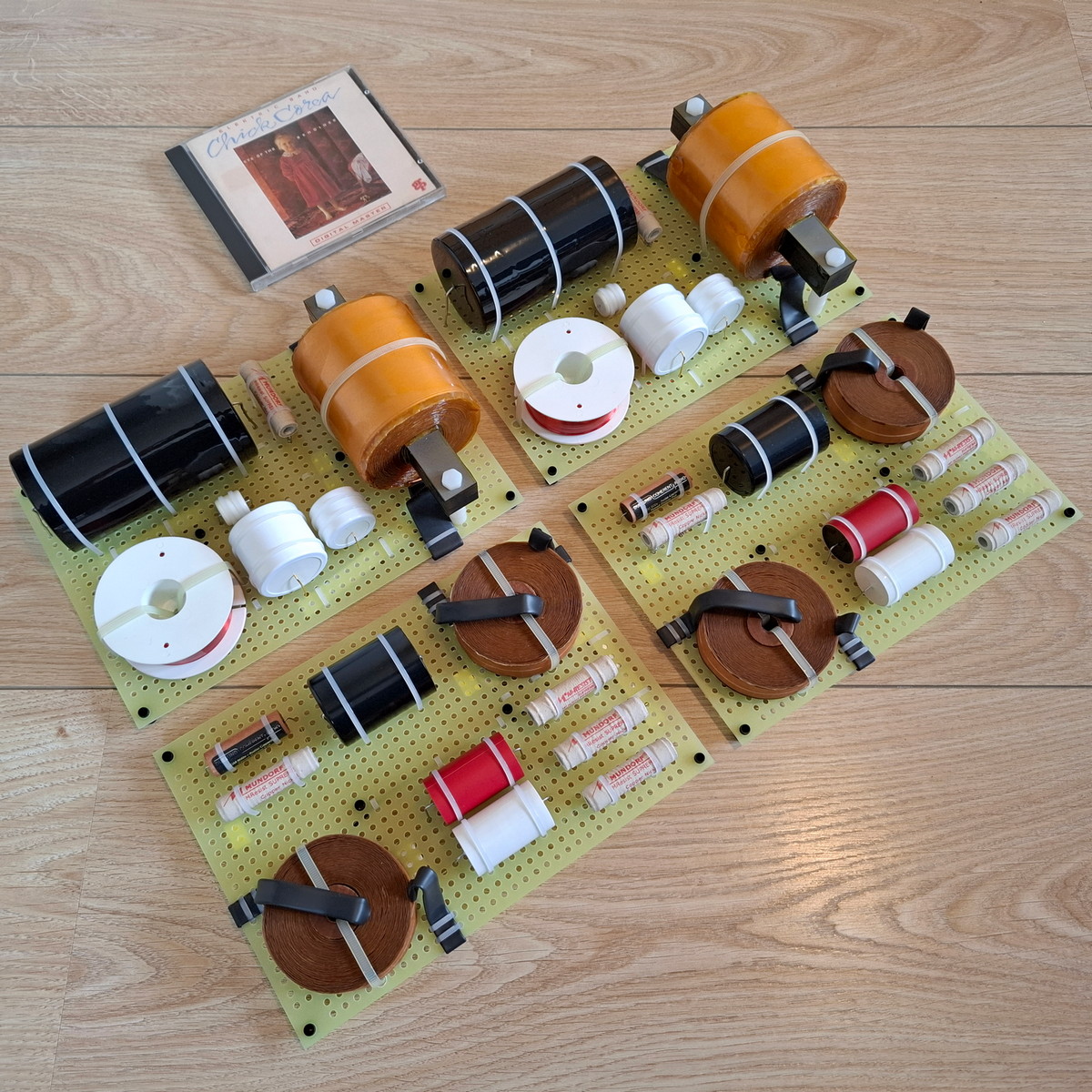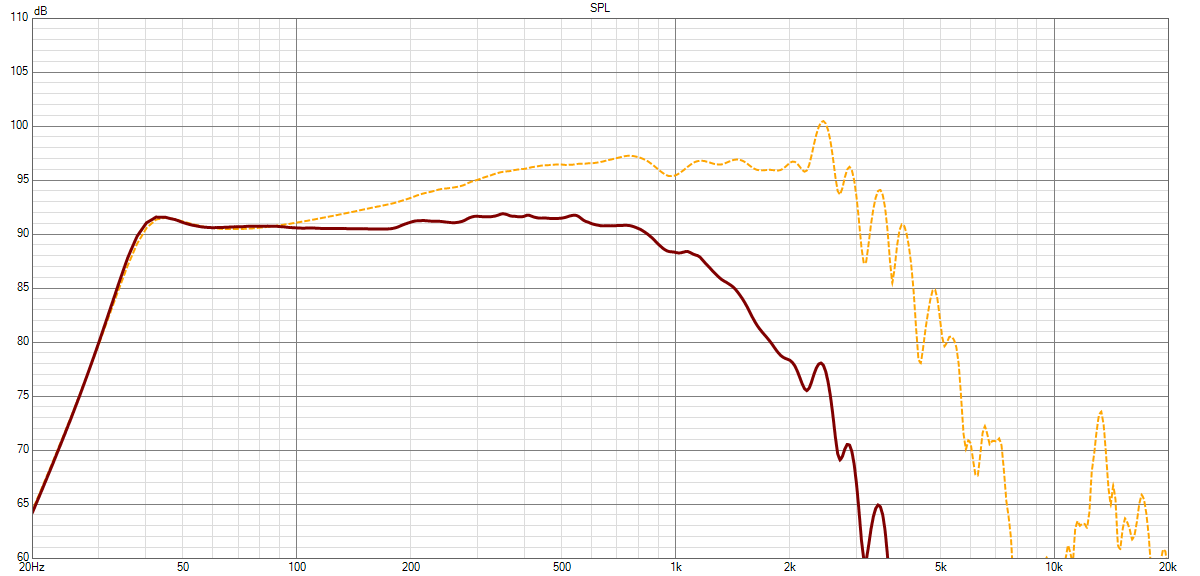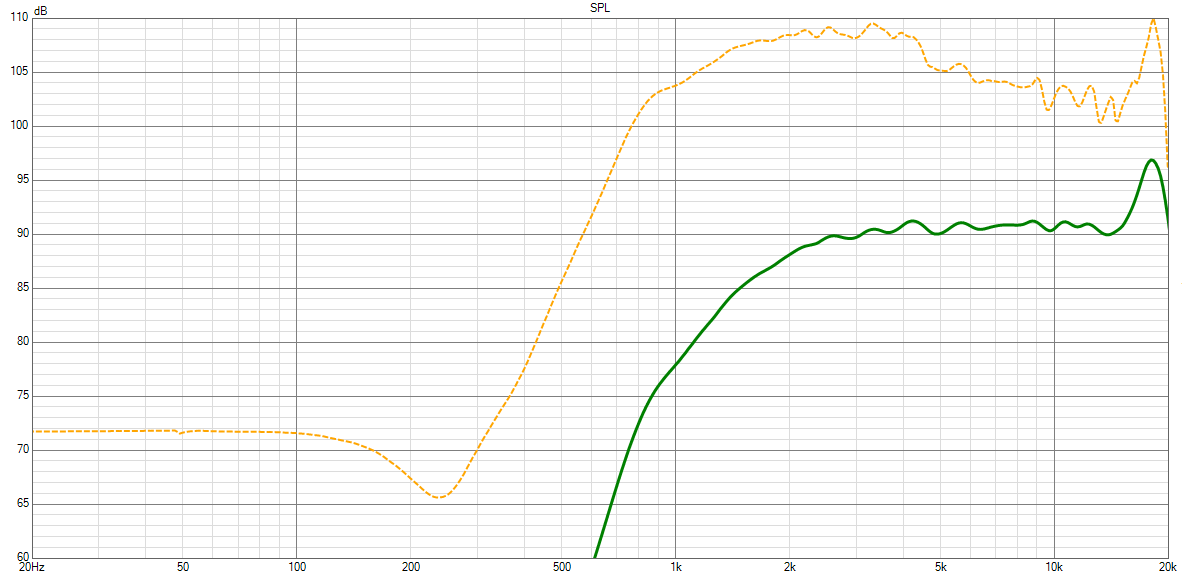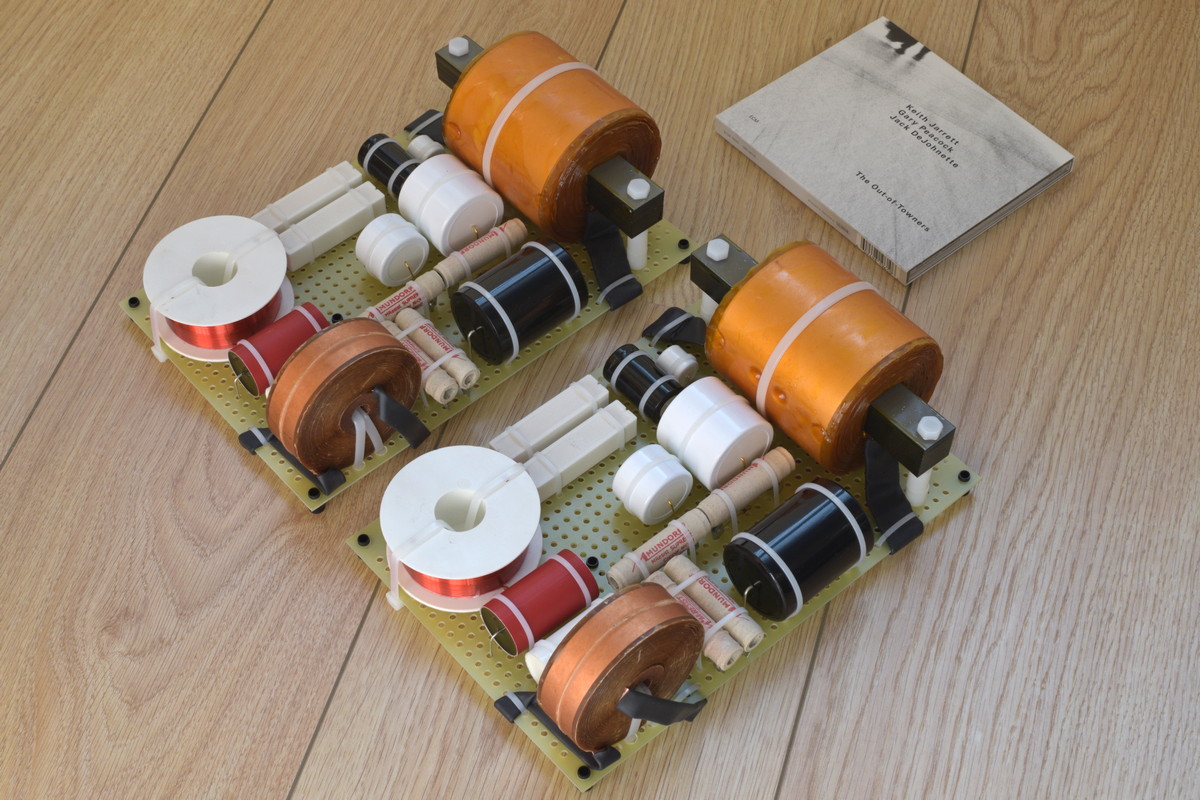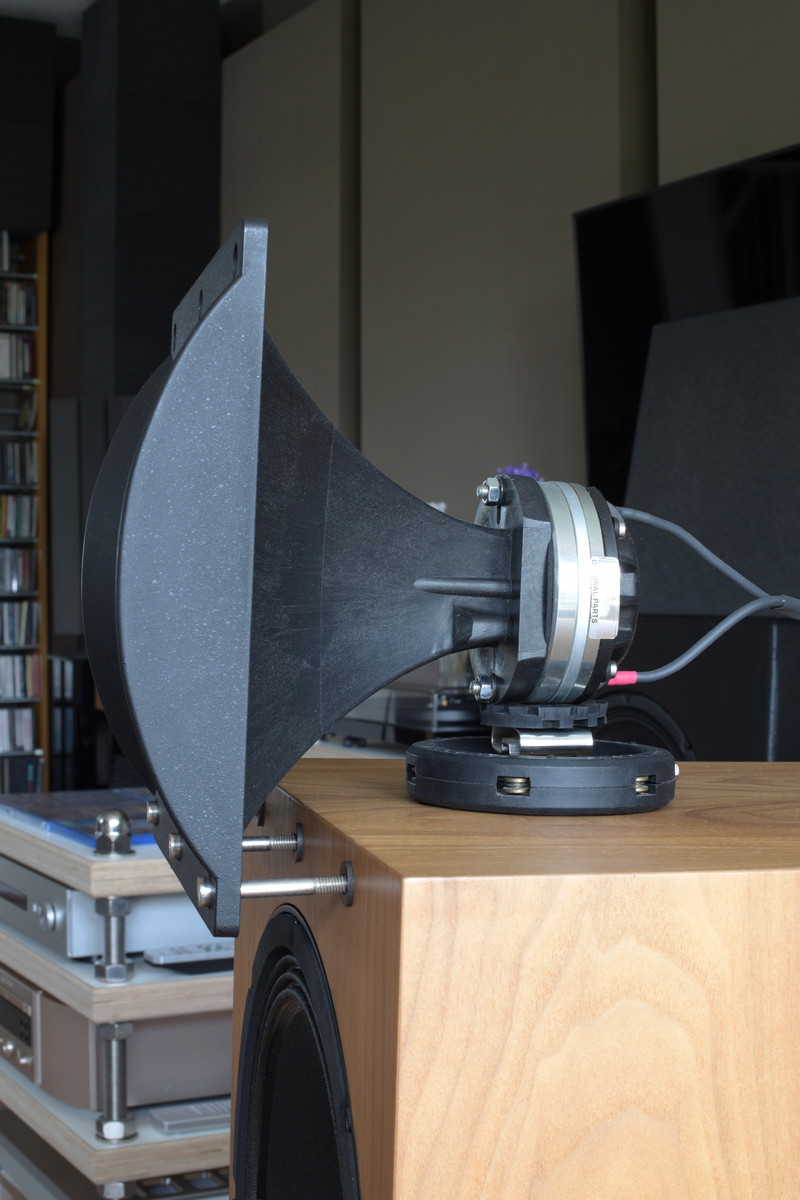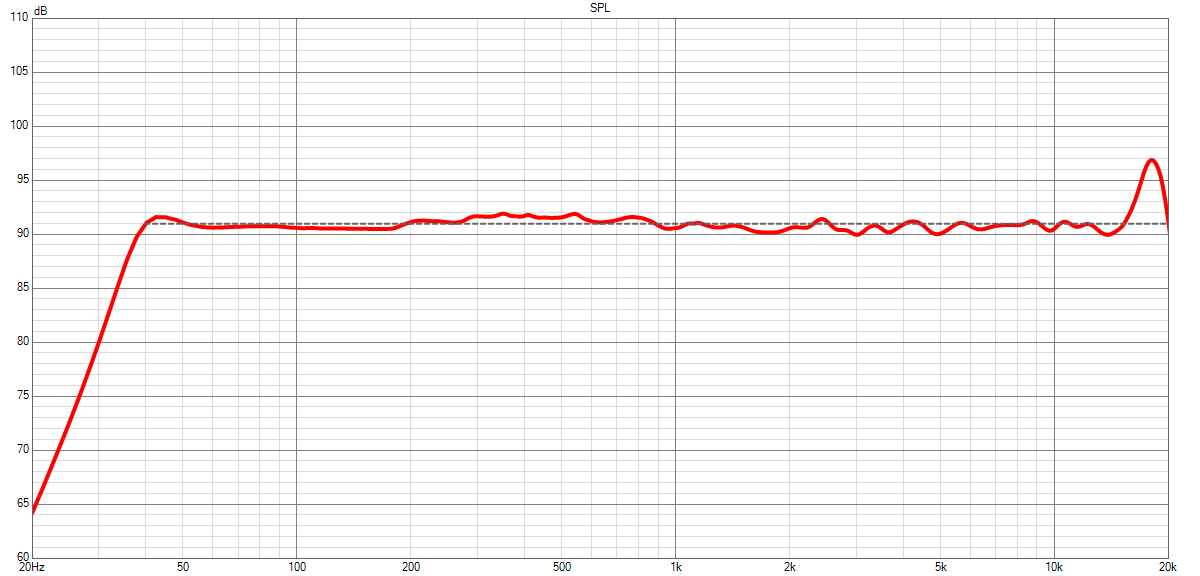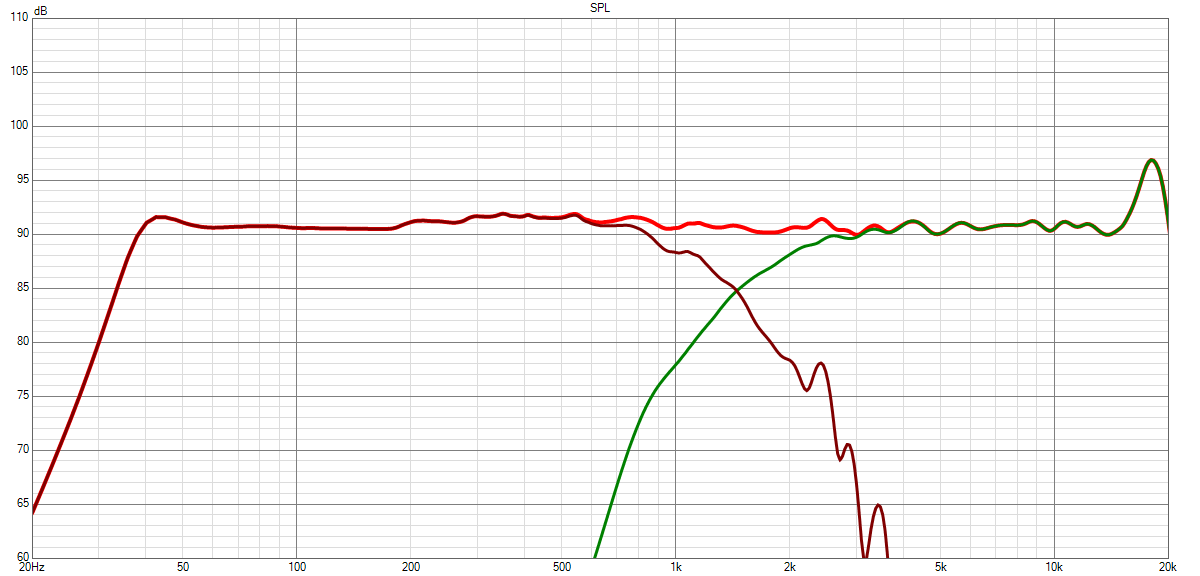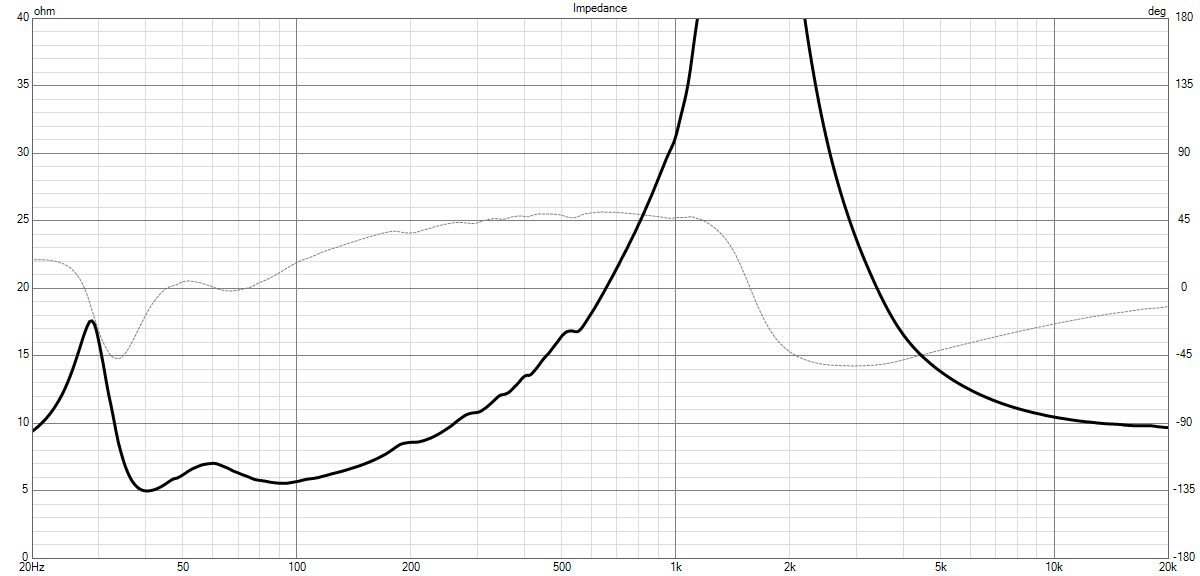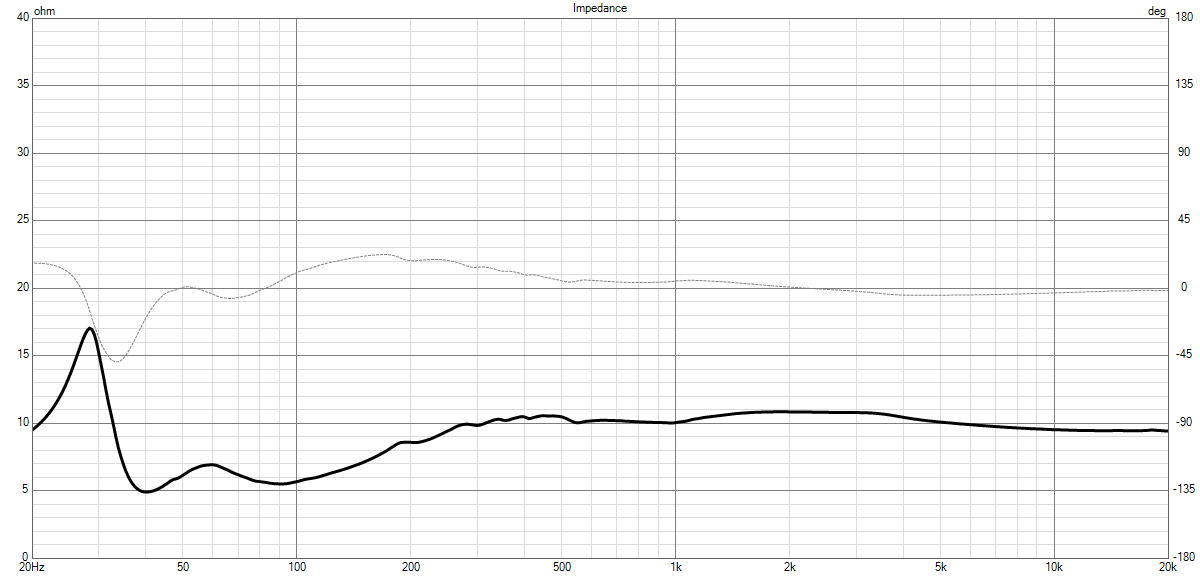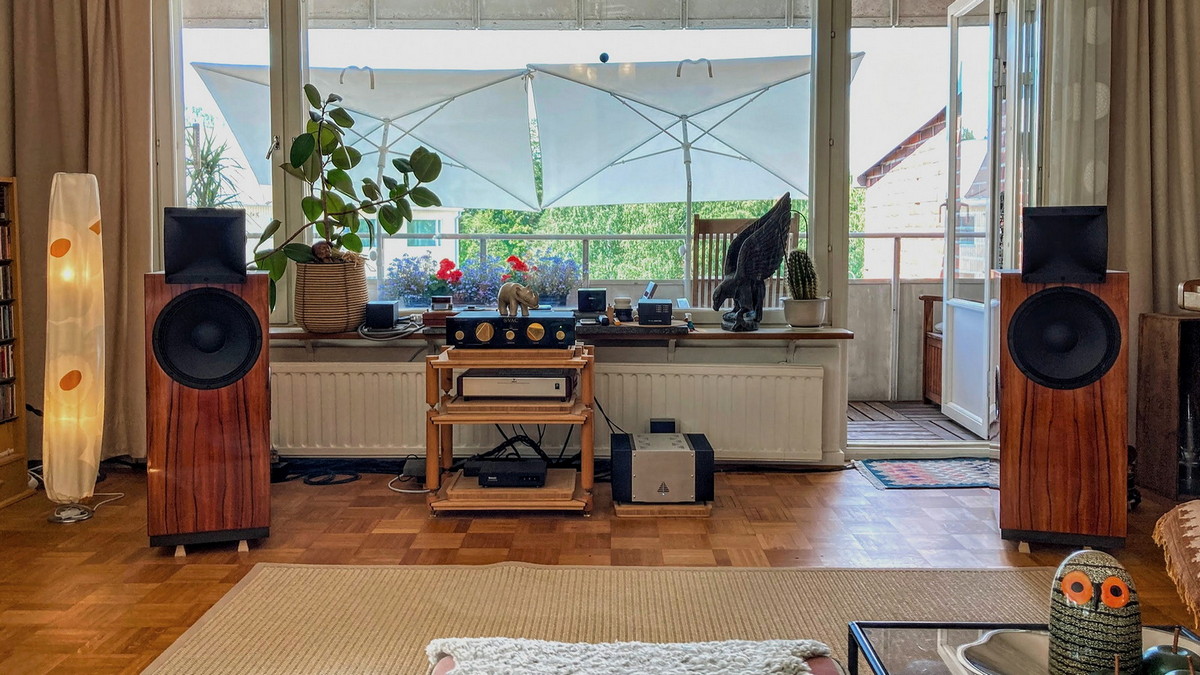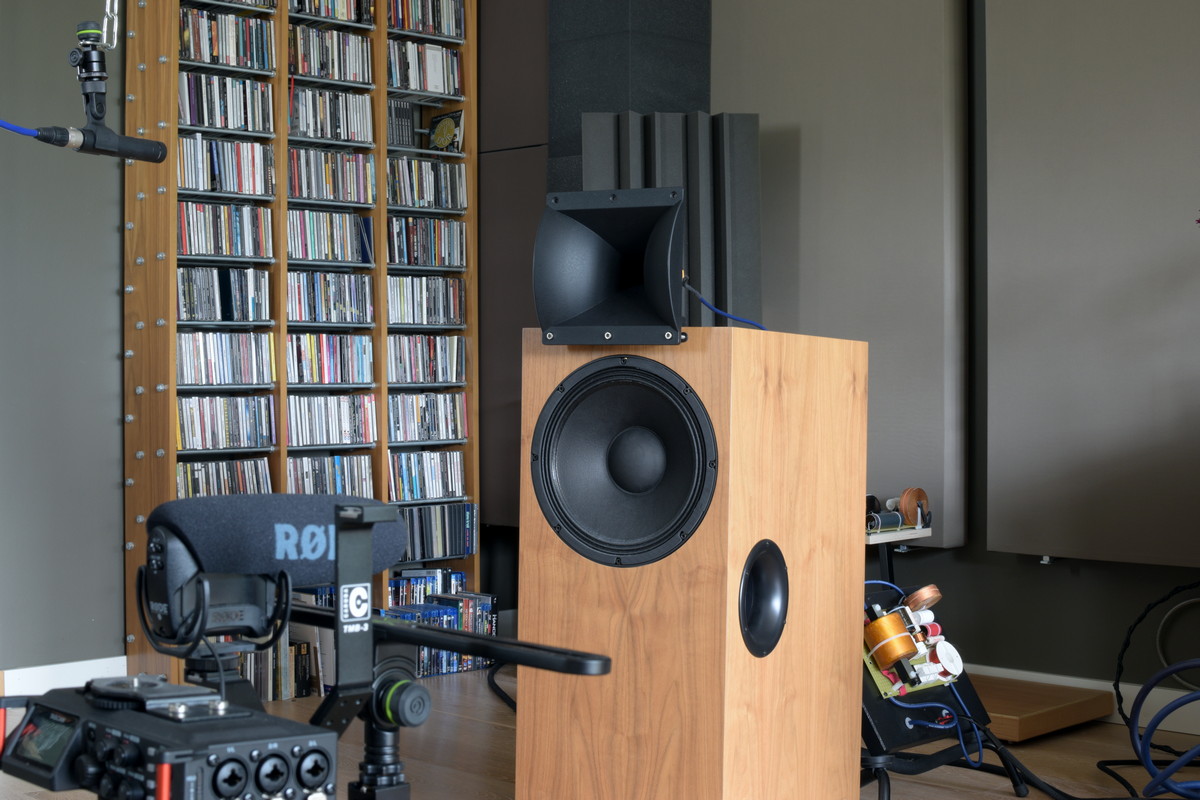|
The Mezzo Calpamos is, as it's name suggests, a smaller version of the succesfull Calpamos loudspeaker. With it's 200 liter cabinet, a 15-inch midwoofer and large bi-radial horn with a heavy 2-inch compression driver, the Calpamos made it's way to many audio enthousiast's homes. As not everybody has space for a pair of large monitor loudspeakers the idea was born to design a more compact version with around half the volume, a smaller 12-inch midwoofer and a horn with a light weight 1-inch compression driver. Calpamos (2017)
For the two-way Mezzo Calapmos I needed a twelve inch woofer that had decent sensitivity, good bass extension, smooth midrange and a healthy impedance. There are not many woofers that can do all those things at the same time, often they are either more bass extension orientated or focussed on good midrange qualities. Luckily Faital Pro had the perfect solution in the form of the 12PR320.
The compression driver and horn combination took more effort to find. I tried various combinations of about five different compression drivers and ten different horns. Of the combinations there were a few that were very promising with a smooth frequency response on and off-axis. Nearly all the horns I experimented with had a nominal horizontal coverage of 90 degrees, I find this important when using horns in a home environment as it provides a nice wide sweet spot at the listening position. Horns with a narrower coverage obviously beam more and therefore limit the sweet-spot. As I wanted the horn to be placed on top of the bass cabinet (to make the speaker look smaller) the overall shape was also important. The obvious contender for the horn would have been the P-Audio PH-3220 as this is basically the 1-inch throat version of the 2-inch PH-2380 used in the original Calpamos. But I didn't like the look of that so much so I opted for the square shaped P-Audio PH-230 that sounded equally good. The photo below shows the PH-230 bolted directly to the woofer cabinet. In the final version I moved the horn forwards creating better phase integration with the woofer and a resulting improvement in image depth.
The woofer cabinet of the Mezzo Calpamos is identical to that of the Nova Andromeda. The cabinets are built from 18mm / 13 ply baltic birch plywood as this is stiffer and far more pleasent to work with than MDF. Yes, MDF does cost only a quarter of the price of high quality birch plywood but with MDF you get what you pay for: a cheap material that sounds cheap and creates terrible amounts of smelly dust when machined. To build a pair of woofer cabinets you will need about two sheets of 1250 x 2500 x 18mm birch plywood. One sheet weighs roughly 40 kg's so I would advise to go to the shop with a friend or relative. Internally the cabinet is heavily braced, the baffle is double thickness and the base is triple thickness. Together this results in a relatively "dead" enclosure. The overall cabinet dimensions and the internal sub-divisions created by the matrix are dimensioned in such a way that they are not multiples of each other. This way, any annoying panel resonances that could occur are reduced to a minimum. As every loudspeaker cabinet has some form of resonance, it is better to have a few low-level resonances than only one or two that are much higher in magnitude. With a total finished weight of around 50kg's per loudspeaker there is plenty of mass behind these woofers. The open view renderings (by Marcus den Boer) should give you a good idea of how the the bass enclosure is constructed, please check the 2D CAD-drawing in the CAD-library for more details. I choose to glue the panels together using normal white PVA wood glue. After all was dry and sanded I covered them with a layer of real wood walnut veneer, also applied with normal PVA wood glue. The plinth at the bottom is painted black to match the drivers and ports. The entire cabinet including the black plinth was given three thin coats of clear, matte varnish. The first coat is nearly completely sanded off again and is basically just to prime the walnut veneer. After the second coat is applied and given time to dry, it is sanded smooth with fine 600 grit sand-paper. Finally the third layer gives the cabinets their nice smooth surface. Each woofer cabinet is ported by means of two large 100mm internal diameter ports with large 180mm flares on the outside. The two ports are positioned mirrored one in each side panel, just below the woofer. Each port consists of an Intertechnik JetSet-100AT outer flare and an Intertechnik JetSet-100WR ninety degree bend and are supplied as part of the kit together with the appropriate gasket sealing tape and matching black screws. When the two parts are glued together they form exactly the correct length for a port tuning frequency of just under 40Hz. The end result of the interaction between cabinet, ports, woofer and crossover create a -3dB point of 36Hz. To create an air-tight seal, gasket sealing tape is applied to the rear of the woofer's chassis and the rear of the port flares. The binding-posts, screws and internal wiring are also supplied with the loudspeaker kit. To keep the costs of the loudspeaker kit at an acceptable level and to give you some room to fine tune to personal taste, the kit is supplied with standard gold-plated binding posts (to be mounted directly in the wood) and with Van Damme Blues Series Studio Grade loudspeaker cable. Both are neutral sounding and very cost-effective solutions. I could have gone all nerdy and supplied the kit (for example) with WBT NextGen or Furutech bindingposts, matching binding post plates and several meters of Furutech Alpha S-14 loudspeaker cable instead, but that would have created significant extra costs. When working with a limited budget you have to make certain choices. Feel free to ask for other connectors and cabling if you wish, but please note that these loudspeakers have been voiced with the standard binding-posts and the Van Damme UP-OFC cable, so synergy is already top notch.
I use several different software packages for taking all the electric and acoustic measurements needed for developing, building and testing loudspeakers. For the simulations during the design stage and for the pretty images on my website I like to use the very versatile programme VituixCAD as it produces clear and easy to read graphs.
A matched pair of Mezzo Calpamos Deluxe crossovers (L1 + C1 upgrade + dedicated boards for low-pass and high-pass crossovers).
The woofer low-pass crossover consists of a second-order network. A lot of care has been taken to find a combination of components that guarantee the extremely important coherency and bring out the full potential of the Faital Pro woofer. The Mundorf VSCU inductor with 9AWG / 7mm2 copper foil, paper and resin combines the rich and spatial timbre of copper foil and paper with the definition you get with an extremely low internal resistance. The low-pass capacitors are Mundorf EVO Silver Gold Oil types known for their fine detail, airy and open presentation. They are not my favourite capacitor for use with tweeters, but parallel to (large) paper cone woofers they give such drivers the precision that is more common to hard-cone woofers. It just goes to show that it's all about the right combination and implementation. So that the low-pass functions correctly there is parallel to the woofer also an impedance correction network that smooths out the second impedance peak above the port tuning frequency. Woofer response without crossover (yellow dashed curve) and with crossover (brown solid curve). The tweeter high-pass consists of capacitor C2 and inductor L1. To combine great depth and detail with rich harmonics and a realistic tone, I choose a Mundorf Supreme Classic Silver Gold Oil capacitor in combination with a Jantzen Audio Wax Coil inductor. This combination really maximizes the potential of this compression driver, I wouldn't use it in combination with some titanium drivers but with polymer drivers the clarity and detail of the Supreme Classic Silver Gold Oil really complements the smoothness of the Ketone Ploymer driver just perfectly. I had to modify the the tweeter's unfilterd response slightly due a small but noticable hump in its output level between 2kHz to 4.5kHz. This is dealt with by L2, C3+C4 and R6. The peak in the output level at just over 18kHz is only measureable when exactly on-axis. Seeing that the best listening position is about 5 to 10 degrees off-axis, the peak is inaudible as it vanishes when measured off-axis. Tweeter response without crossover (yellow dashed curve) and with crossover (green solid curve). High quality crossover components are physically much larger and heavier than standard quality types, the end product consists of a single 165 x 240mm crossoverboard per loudspeaker. The crossovers are mounted outside the cabinets to minimize vibrations and keep them well away from the woofer magnet. It is possible to squeeze the crossovers inside the woofer cabinets but there are only a few millimeters of space to manoeuvre. When you have attached all the wiring to the crossovers it can get a bit tricky to mount the crossovers inside the cabinets. A more elegant solution is simply to mount the crossovers on the outside of the rear panel of the woofer cabinets. You won't see them from the listening position and it will make connecting everything a lot easier. A matched pair of Mezzo Calpamos crossovers (an earlier version without inductor L1, resistor R9 and the Duelund bypass). For optimum phase the horn / tweeter combination should be positioned circa 35mm forward from the baffle. This will give the best imaging! The exact distance will depend on your listening height, for a higher than average listening height the horn will have to be placed a little further back. If you have a low listening seat, then the horn should be placed further forward. A little bit of experimentation for the optimum distance won't do any harm :-)
Overall frequency response of the Mezzo Calpamos measured on the horn axis. Very neutral tuning within +/-1dB over the whole range. Sensitivity 91 dB / 2,83 volts; Graph range 20Hz - 20.000Hz; Vertical SPL scale 50dB to 100dB's; sub divisions of 1dB.
The individual and overall acoustic frequency measurements of the drivers with crossover. The brown curve shows the combined output of the Faital Pro 12PR320 woofer and ports. The green curve shows the combined output of the Faital Pro HF108R compression driver with the P-Audio PH-230 horn. Acoustic crossover point circa 1450Hz. Frequency range 20Hz to 20kHz; Vertical scale 50dB to 100dB's with sub divisions of 1dB.
Impedance plot of the Mezzo Calpamos. It's nominal 8 ohm impedance and smooth electric phase show an easy load for most amplifiers. The impedance minimum is 5 ohms at 40Hz. Plot frequency range 20Hz to 20.000Hz; Vertical scale zero to 40 ohms with sub divisions of 1 ohm.
As an optional extra the Mezzo Calpamos DIY kit can be supplied with an impedance correction network (please ask when ordering). This network creates a near flat impedance of 10 ohms over the whole range above circa 250Hz. Some valve amplifier lovers might prefer this, although I haven't encountered any issues so far when this network is not used. Plot frequency range 20Hz to 20.000Hz; Vertical scale zero to 40 ohms with sub divisions of 1 ohm.
I might as well be writing about the impressions of the Nova Andromda as the Mezzo Calpamos has a similar signature. It produces music in a very pure and coherent manner, letting you hear very deep into the recording for hours on end. The neutral and rich presentation gives great insight into the music and is at the same time smooth to the ear. The Mezzo Calpamos has a pleasent combination of dynamics, openness and warmth. The use of very high quality crossover components results in heaps of information that is presented in a very natural way, nothing is exaggerated and at the same time nothing is concealed. The bass is well defined, is never bloated nor slow, goes deep and has weight. If I were to look for differences between the Nova Andromeda and the Mezzo Calpamos, I would say that the Mezzo Calpamos wins extra points with it's explosive dynamics and that the Nova Andromeda has a slightly brighter top end.
"Thought I'd give you an update of the Mezzo Calpamos. I think it has taken about 3 months of daily use for the Mezzo Calpamos to open up. But now that it has, it really does sound beautiful, impressive and more life like than anything I've heard to date. The speakers sound so good. So 'Hats off to you!' =) Your crossover 'cooking' is just incredible. Like ABBA: Thank you for the music! =)" - Jukka, Helsinki, Finland
No part of this website may be reproduced in any form without written or e-mail consent from the author. The designs are free to use for private DIY-purposes only, commercial use is strictly prohibited. Humble Homemade Hifi is a subsidiary of tg-acoustics - Chamber of Commerce 37138402 - The Netherlands
Last updated 22.11.2025 |
